Huesca is a city, which despite its size today, being a strategic enclave during the Middle Ages, was an important place. Importance that has left its vestiges in the form of civil and religious buildings of different eras and styles. City that has different and varied green areas, a city that loves culture and, in recent years, a city of congresses. Huesca is a comfortable city to walk, that can be traveled with tranquility, with calm admiring the heritage that we find through our streets.
CATHEDRAL OF HUESCA
Climbing the narrow street Ricafort we arrive at the beautiful and quiet Plaza de la Catedral. A little corner where we could well imagine reading a book to the shade of the trees. What is it easy to imagine? The main monument of this square could not be other than the imposing Cathedral of Huesca. Declared a Historic Artistic Monument in 1931, it is one of the most important monuments of the city and without a doubt a must visit.
It was such a size that we could not portray it in full …
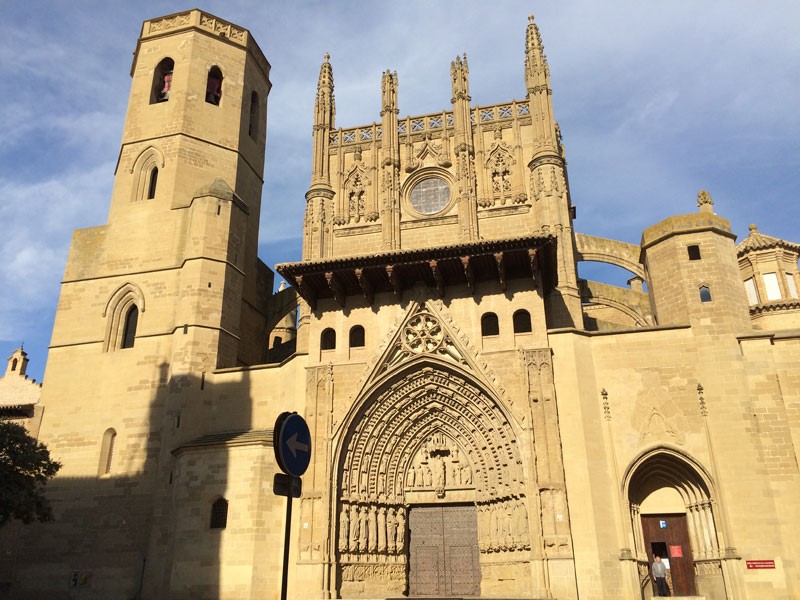
This superb work of art was built in several stages. Its facade reflects a clear passage from the Gothic to the Renaissance style of the upper part. The main entrance door, totally gothic, is simply spectacular. Adorned with seven ogive archivolts adorned in turn with figures of 16 martyrs, 14 virgins, 10 angels and 8 prophets. On the sides appear 14 figures: the 11 Apostles, San Juan Bautista, San Lorenzo and San Vicente, these last two patrons of the city.
We could not enter but the main altarpiece of the Cathedral has a sonorous reputation, being the most important work of this and one of the most beautiful examples of Renaissance construction in Spain.
THE UNIVERSITY SQUARE
Following our route we reach the Plaza de la Universidad, a square that, even today, emanates a certain aura of excellence, elegance and classicism.
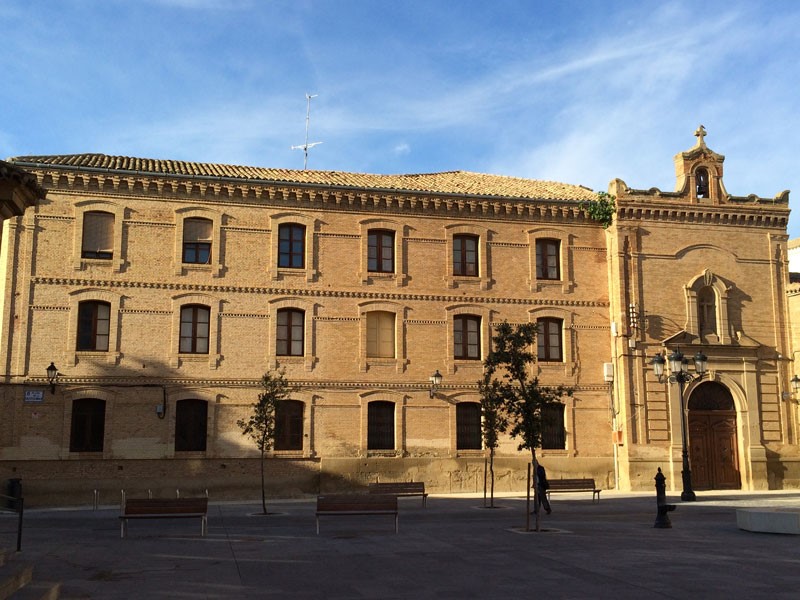
Faculty of Humanities of Huesca
But what tranquility was breathed … We were just us and a man walking calmly from one side to another.
PROVINCIAL ARCHAEOLOGICAL MUSEUM
Another of the buildings that can be visited in the Plaza de la Universidad is the Provincial Archaeological Museum, also called the Huesca Museum, where, among other wonders and relics, the rooms of the Palace of the Kings of Aragon can be admired.
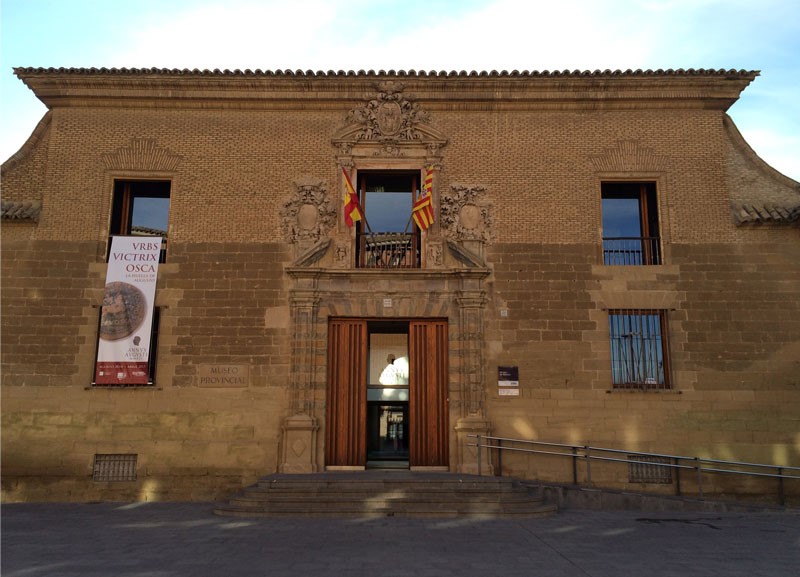
WALL OF HUESCA
Following our particular rut, the next objective was to be the remains of the Wall. We were not sure where he was, so we had to ask a kind lady who, very kindly, gave us some detailed explanations. How nice is the people of Huesca!
Located in Ronda de Montearagón, this 9th century wall borders the old town of Huesca. Of its almost 100 initial towers only one remains, which attests to its enormous state of deterioration.
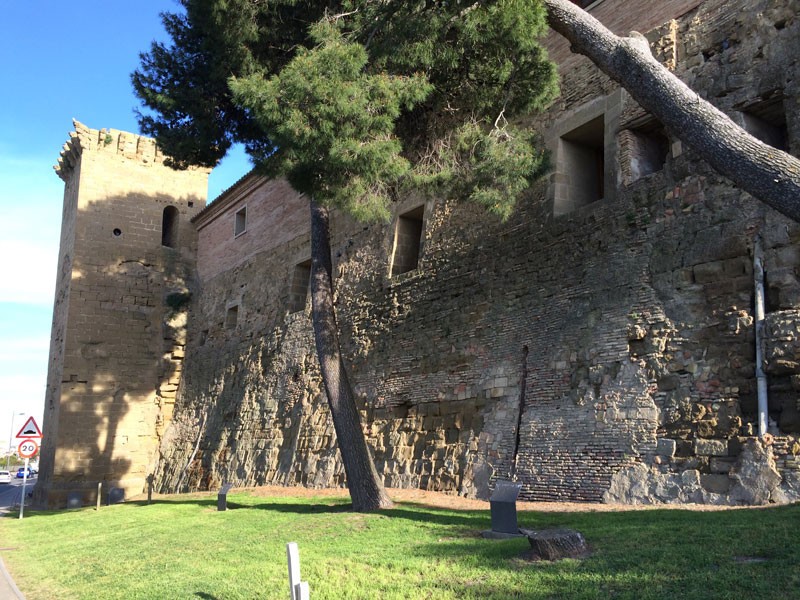
LUIS LÓPEZ ALLUÉ SQUARE
From here we went to the busy and famous Luis López Allué square. This square we do not know if it is the most famous or not, what we guarantee is that it is the most colorful square of Huesca and also the one of greater beauty and charm, or if not, judge yourselves …
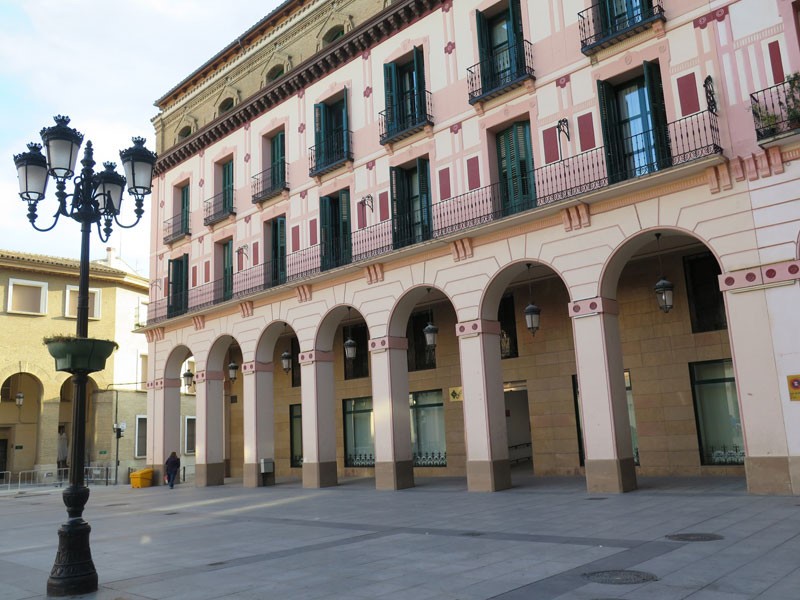
The Luis López Allué Square is popularly known as the Market Square since the food market was located here until 1976. Today, this square is one of the main places to celebrate the local festivities of San Lorenzo.
In many of the low buildings you can find many establishments, bars and restaurants as well as the Tourism Office of the province of Huesca.

GROCERY “LA CONFIANZA”
One of the most emblematic establishments that can be found in the Luis López Allué Square, and that particularly made us very much visit, is the grocery store La Confianza. This trade, opened to the public in 1871 by the Frenchman Hilario Vallier, is the oldest active shop in Spain! There is nothing!
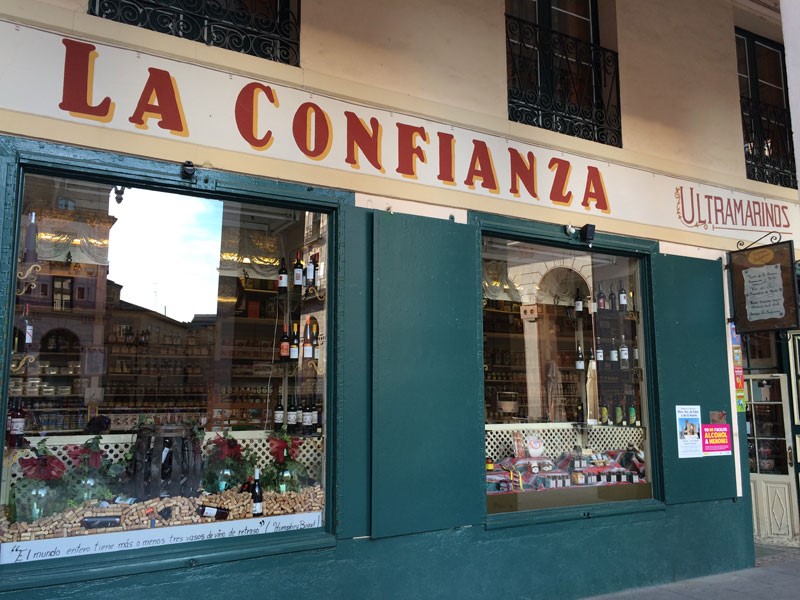
It is a true delight of commerce, its facade, its walls, the ceilings, the ornamentistic details … To enter inside is to make an authentic retrospective in time, expecting to find ladies with pompous dresses and straw hats tied with delicate ties to the neck.
In the store they have a multitude of artisanal and traditional products from Huesca, which only makes your mouth water when you see them. In the end, we chose the famous Castañas de Mazapán, a dessert that has been elaborated in the province since the beginning of the 19th century and which is basically made up of almonds and sugar.

They were rich but we were a little cloying … If you are very sweet you will love it, hehehe.
But this is just one example of a typical Oscense sweet. The confectionery of Huesca has acquired special fame and renown over the years. Marzipan chestnuts should be added Russian cake, Almudévar braids, almond tiles and bow ties.
ASCASO PASTRY
A testimony to this pastry tradition are the many bakeries you can find in the city. One that stands out above the others, and that we thought was a true temple or sweet museum, is Ascaso Pastry.
In the middle of Calle del Coso Alto, 9, the facade of the bakery does not honor what you find when you enter. A wide and elegant facilities with a very careful decoration and an exquisite placement of the different sweets that they make there.
Without a doubt, it deserves a visit as an example of the good work of Huesca for sweets!
MONASTERY OF SAN PEDRO “EL VIEJO”
Very close to the Plaza de Luis López Allué is the spectacular Monastery of San Pedro «El Viejo», also known as the Romanesque Church of San Pedro «El Viejo». This simple and robust building from the 12th century is one of the oldest temples in Spain and one of the best examples of Romanesque architecture in Aragon.
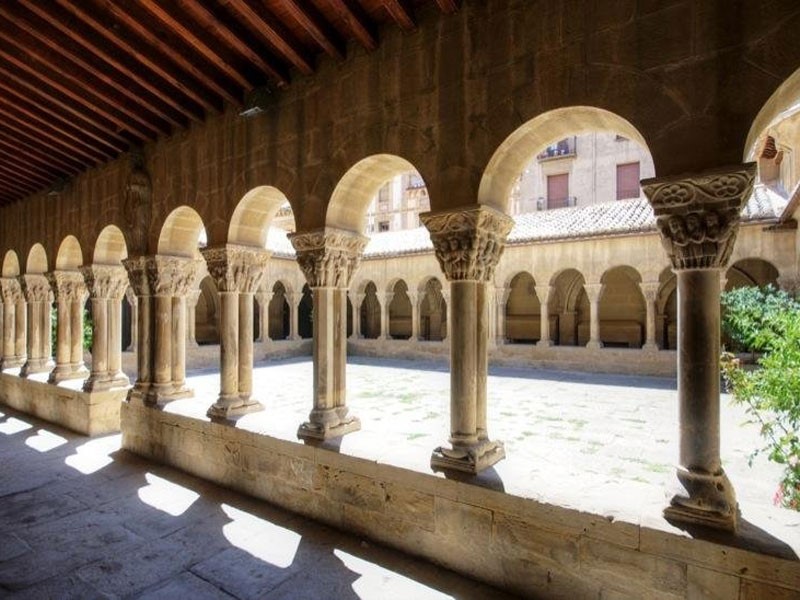
Located in the square that bears the same name, its interior houses important buildings such as the main altarpiece, in Renaissance style, and mural paintings that represent the eternal struggle between David and Goliath.
But without a doubt, the Monastery’s masterpiece is found in its cloister. A space with capitals of the master of San Juan de la Peña that reflect episodes full of fantastic and biblical symbolism.
OSCENSE CIRCLE / CASINO DE HUESCA
With the feeling of knowing Huesca as if we were locals we went to another of its best-known squares, the Plaza de Navarra (yes, indeed, Huesca is full of squares, hehehe).
In this central square is the emblematic Oscense Circle or Casino de Huesca. A building to which the citizens of Huesca have special affection for it has been enjoyed by many generations.
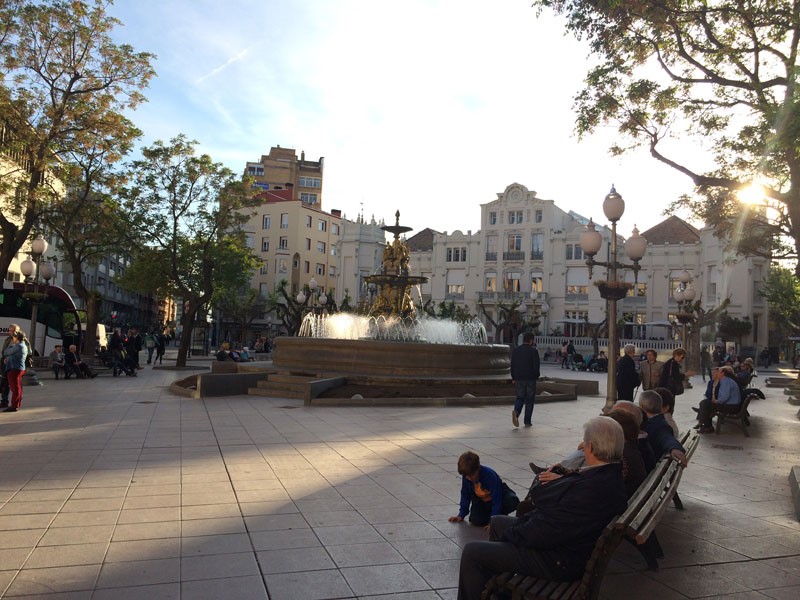
Built at the beginning of the 20th century as a social and recreational club, it has survived to this day, conserving part of its modernist architecture of the time, highlighting the main staircase that has been declared an Asset of Cultural Interest!
MIQUEL SERVET PARK
Very close to the Oscense Circle, just 100 meters away, Huesca has its lung in the park of Miguel Servet. An idyllic park with more than 74,000 square meters to walk and relax, which has more than 80 different tree species coexisting in harmony with numerous species of shrubs and aquatic.
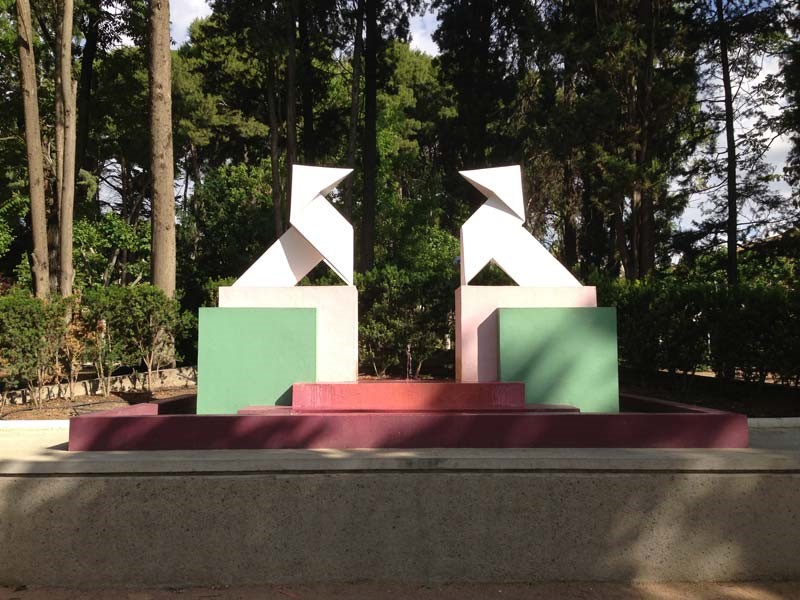
In addition to the extensive flora, the Miguel Servet Park has several interesting commemorative and artistic monuments such as the Pajaritas de Ramón Acín, the Rosaleda, the music kiosk and even a replica of the Snow White cottage.



